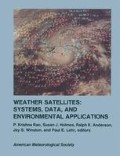Abstract
The use of data from NOAA polar orbiters in observing lake phenomena has been restricted mainly to the Great Lakes. Although the ice and surface water temperature analyses described here use the Great Lakes as examples, the analysis techniques can be used worldwide. Satellites have also been used for detecting heavy concentrations of floating phytoplankton (Great Lakes Res. Div., 1967) and algal blooms (Bressette and Lear, 1976; Strong, 1974). Satellites also permit the monitoring of changes in land-water boundaries as well as sedimentation and biological activity in water bodies. For example, NOAA and Landsat data have detected a wind-induced seiche in thhe Great Salt Lake and a dramatic change in the area of Lake Chad after a prolonged drought.
Access this chapter
Tax calculation will be finalised at checkout
Purchases are for personal use only
Preview
Unable to display preview. Download preview PDF.
Editor information
Rights and permissions
Copyright information
© 1990 American Meteorological Society
About this chapter
Cite this chapter
Rao, P.K., Holmes, S.J., Anderson, R.K., Winston, J.S., Lehr, P.E. (1990). Lakes. In: Rao, P.K., Holmes, S.J., Anderson, R.K., Winston, J.S., Lehr, P.E. (eds) Weather Satellites: Systems, Data, and Environmental Applications. American Meteorological Society, Boston, MA. https://doi.org/10.1007/978-1-944970-16-1_33
Download citation
DOI: https://doi.org/10.1007/978-1-944970-16-1_33
Publisher Name: American Meteorological Society, Boston, MA
Online ISBN: 978-1-944970-16-1
eBook Packages: Earth and Environmental ScienceEarth and Environmental Science (R0)

